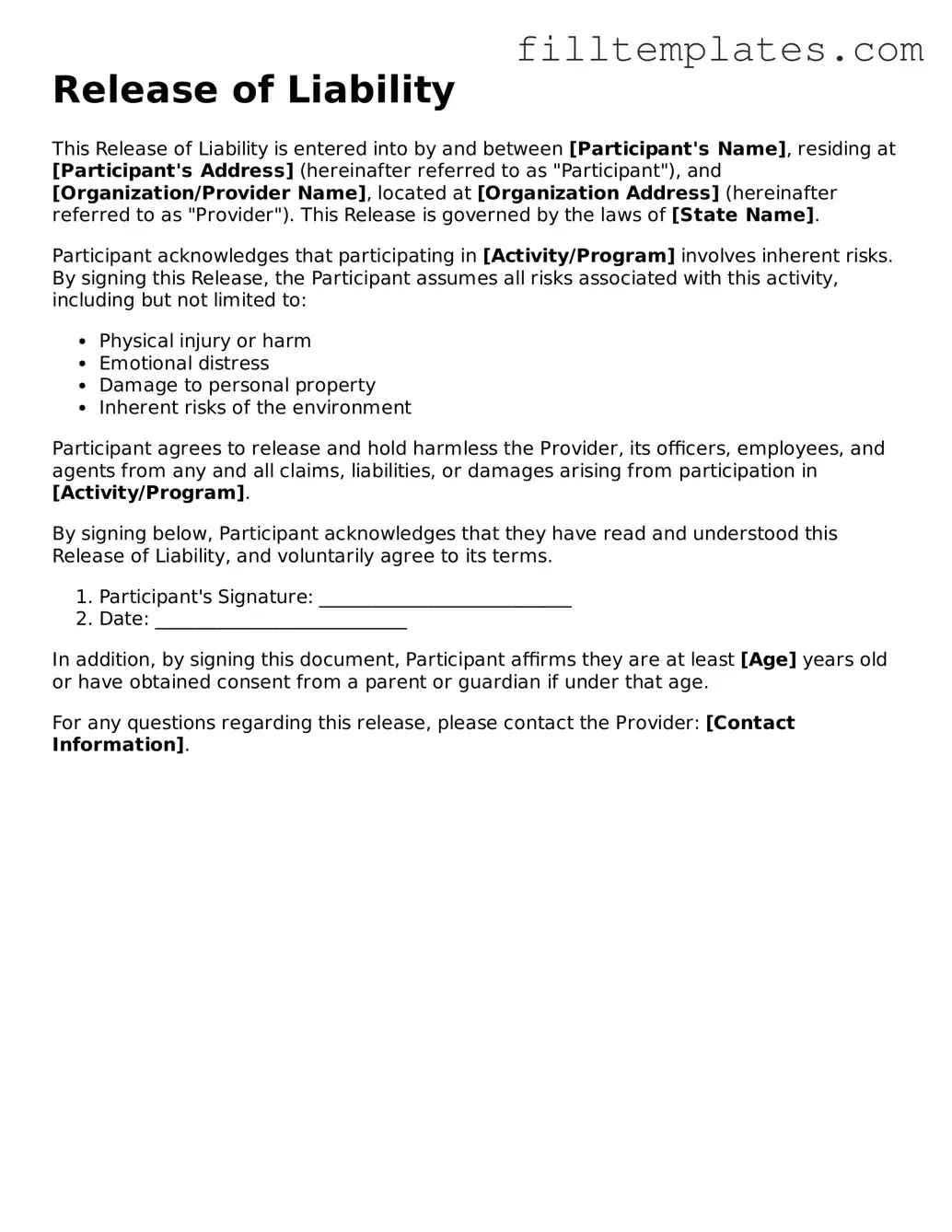Release of Liability
This Release of Liability is entered into by and between [Participant's Name], residing at [Participant's Address] (hereinafter referred to as "Participant"), and [Organization/Provider Name], located at [Organization Address] (hereinafter referred to as "Provider"). This Release is governed by the laws of [State Name].
Participant acknowledges that participating in [Activity/Program] involves inherent risks. By signing this Release, the Participant assumes all risks associated with this activity, including but not limited to:
- Physical injury or harm
- Emotional distress
- Damage to personal property
- Inherent risks of the environment
Participant agrees to release and hold harmless the Provider, its officers, employees, and agents from any and all claims, liabilities, or damages arising from participation in [Activity/Program].
By signing below, Participant acknowledges that they have read and understood this Release of Liability, and voluntarily agree to its terms.
- Participant's Signature: ___________________________
- Date: ___________________________
In addition, by signing this document, Participant affirms they are at least [Age] years old or have obtained consent from a parent or guardian if under that age.
For any questions regarding this release, please contact the Provider: [Contact Information].
